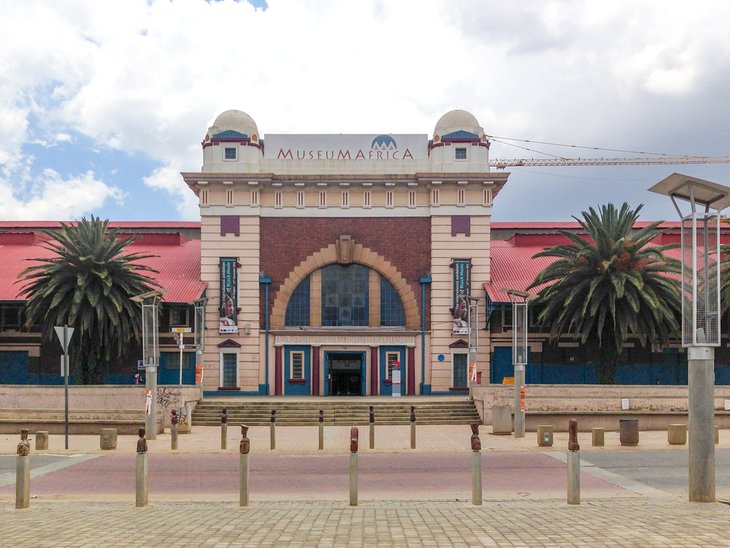9 Easy Facts About Johannesburg North Attractions Explained
9 Easy Facts About Johannesburg North Attractions Explained
Blog Article
Getting The Johannesburg North Attractions To Work
Table of ContentsThe Best Guide To Johannesburg North AttractionsThe smart Trick of Johannesburg North Attractions That Nobody is Talking AboutThe Basic Principles Of Johannesburg North Attractions Unknown Facts About Johannesburg North AttractionsNot known Facts About Johannesburg North Attractions6 Easy Facts About Johannesburg North Attractions Explained
The city grew on the edge of the Witwatersrand Main Coral reef, a subterranean stratum of gold-bearing quartz-silica corporation that arcs for hundreds of miles beneath the Highveld - Johannesburg North attractions. Most of the gold mines in the city stopped operation in the 1970s, but in its day the Witwatersrand gold industry accounted for more than 40 percent of the globe's yearly gold production.Johannesburg has a temperate environment. The city delights in regarding 8 hours of sunlight per day in both winter months and summertime.
What rainfall the city obtains drops practically specifically in the summertime, typically in amazing late-afternoon electrical tornados. Air contamination poses a significant issue, specifically in the cold weather, when thermal inversions hinder the westward flow of air from the Indian Sea. Air pollution is most extreme in the densely settled Black towns on the city's periphery, where many residents still rely upon coal for fuel.

Little Known Facts About Johannesburg North Attractions.
The equilibrium of the city is inhabited by whites. Accommodation varies in personality and top quality.
Physical growth, although somewhat restricted by transportation, proceeded quickly as migration to South Africa, and Johannesburg specifically, increased substantially. This problem was solved in the 1930s when the car was introduced in automation to South Africa. Vehicles were, for the many part, constrained to the well-off, and allowed them to relocate to the north of the city and commute right into the centre.
Most inadequate suburban areas were mixed, with inadequate blacks and whites living together, although the well-off suburban areas were usually scheduled for whites. This altered with the political election of the National Event in the 1948 political elections, that started to formalise the system referred to as discrimination. Apartheid officially assigned which suburban areas each race might reside in under the Team Areas Act.
The approximated populace of the area is 200,000, [] but the variety of people staying in the internal city on a casual basis is unidentified, as lots of are prohibited immigrants. The majority of higher-income citizens and white individuals have actually relocated to the north suburbs and have actually been changed by lower-income black individuals. The unemployment, education and learning, and age profiles of the location are all unidentified, because of the problem of obtaining trustworthy details about the location.
Unknown Facts About Johannesburg North Attractions
Centred on the CBD, the region consists go of the suburban areas of Yeoville, Bellevue, Troyeville, Jeppestown, and Berea to the eastern. To the west it infects Pageview (Johannesburg North attractions) and Fordsburg. There are tiny commercial locations to the south, such as City West-Denver and Benrose. Around 800,000 travelers travel through the central city daily, and it operates as a regional shopping node for visitors from the southern suburbs. Yeoville and Bellevue have a mix of house structures and single domestic systems on small whole lots. The region is located on a mountainous divide that runs from eastern to west.

The 5-Minute Rule for Johannesburg North Attractions
The eastern suburban areas are some of the oldest locations of Johannesburg, there are big neighborhoods of Jewish and various other European backgrounds, the bulk of the populace is English talking. There are 3 golf courses as well as a number of protected ridges with viewsites.
The area is primarily composed of old "matchbox" homes, or four-room residences developed by the government, that were constructed to offer economical holiday accommodation for black workers during discrimination. Soweto is an abbreviation, representing "South Western Townships". Road after street around is lined with matchboxes; nevertheless, there are a few smaller locations where flourishing Sowetans have constructed residences that are more comparable in stature with those in even more wealthy suburban areas.
Hostels are another popular physical function of Soweto. Originally developed to house male migrant employees, numerous have been boosted as houses for pairs and family members. The N1 Western Bypass skirts the eastern boundary of Soweto. The suburban area was not historically enabled to produce work centres within the location, so nearly all of its homeowners are travelers to other parts of the city.
Some Of Johannesburg North Attractions
The residential locations in the north suburban areas are primarily official, with no considerable areas of casual real estate, or real go to my site estate that lacks a long-term framework. This is a well-known location, there is a pattern of land use modification from residential to business, specifically along major arterial roadways and around well established nodes.
The location is see page well connected to road networks, particularly along the north-south axis created by the M1 and N1. Roadways to the eastern and west are much less well created, as there are no highways travelling in that direction. In the direction of the north boundary of the city, the thickness of development decreases, leaving huge locations of undeveloped land around Midrand.
Fascination About Johannesburg North Attractions
The very first suburb to the north of the central city is Parktown, which lies on a hillside overlooking the central city and Hillbrow. It has many well-off citizens and Edwardian-design manors, along with the Education and Clinical campuses of the University of the Witwatersrand. The large concrete Charlotte Maxeke Johannesburg Academic Medical Facility controls the sky line of Parktown.
Report this page